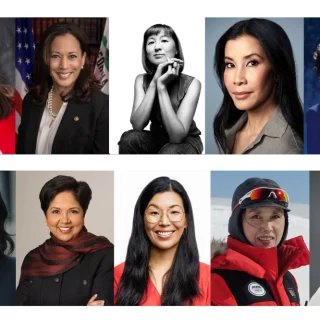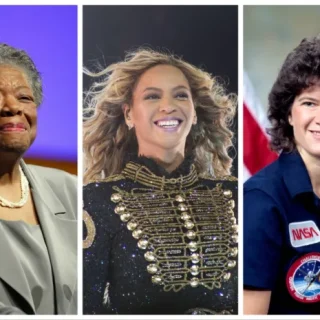|
Getting your Trinity Audio player ready...
|
This list features 22 notable scientists from the 15th century onward and their enduring contributions.
Nicolaus Copernicus
For centuries, people mistakenly believed Earth was the universe’s center. Copernicus proposed that a planet’s orbital size and speed depended on its distance from the sun. His theories sparked controversy with the Roman Catholic Church, which banned his book “On the Revolutions of the Heavenly Spheres” in 1616, after his death.
Galileo Galilei
Galileo transformed our understanding of the universe by improving telescope design to achieve twenty-fold magnification. With these advanced tools, he discovered Jupiter’s four largest moons and distant stars in the Milky Way, which were previously unseen, thus establishing the foundation for modern astronomy.
Robert Hooke
Englishman Hooke introduced the term “cell” in 1665 after studying cork tissue. Known for Hooke’s Law on spring mechanics, he also contributed to the redesign of London buildings following the Great Fire of 1666.
Sir Isaac Newton
Newton’s laws of motion state that objects stay at rest or in motion unless acted upon. His gravity theory calculated planetary masses and ocean tides. Despite Einstein’s later advancements, Newton remains a key historical figure. Fun fact: His mother wanted him to farm at age 12.
Charles Darwin
Charles Darwin, raised in a Christian family in Great Britain, initially held creationist beliefs. However, he revolutionized scientific thought with his 1859 book “On the Origin of Species,” proposing natural selection as the mechanism driving evolution, wherein species adapt and thrive in response to environmental challenges, contrary to his upbringing.
Ada Lovelace
Ada Lovelace, a computer scientist from the 1800s, worked closely with Charles Babbage on his analytical engine. Her meticulous notes introduced revolutionary ideas such as looping, crucial in today’s computing. While her contributions were acknowledged much later, her impact was honored in 1980 when the U.S. Department of Defense named a computer language Ada in her honor.
Gregor Mendel
Gregor Mendel, hailing from Austria, chose to pursue education rather than take over his family’s farm. Through meticulous study of pea plants, he identified dominant and recessive traits, laying the groundwork for contemporary genetics by demonstrating how traits are inherited independently of each other.
Louis Pasteur
Louis Pasteur transformed hygiene practices by advocating for sterilization techniques and introducing pasteurization for food safety. His groundbreaking efforts also encompassed the development of vaccines for diseases such as cholera, smallpox, anthrax, and rabies, despite facing health setbacks like a severe stroke in 1868.
Sigmund Freud
Initially focusing on neurobiology, Freud, born in what is now the Czech Republic but raised in Austria, became renowned for his psychoanalytic theory attributing neuroses to past traumas. He also introduced the id, ego, and superego as fundamental aspects of human personality and suggested dreams help manage subconscious conflicts.
Nikola Tesla
Born in Croatia, Nikola Tesla developed the AC electric system, which became the dominant global electrical method, opposing Edison’s DC system. His inventions, including the Tesla coil for radio transmission, contributed to wireless technology and laid the foundation for modern remote and radar technologies.
George Washington Carver
Washington Carver, born enslaved in Missouri, is renowned for his extensive research on the peanut, discovering over 300 applications such as food items and plastics. He also educated farmers on agriculture techniques and collaborated with Henry Ford on innovations like soybean-based rubber and lightweight car bodies.
Marie Cutie
Marie Curie, originally from what is now Poland, achieved several historic firsts: she was the first woman to win a Nobel Prize in physics and the first individual to earn two Nobel prizes. Collaborating with her husband Pierre Curie, she made significant discoveries in radioactivity, including identifying polonium and radium. She also promoted the deployment of portable X-ray machines during World War I. Unfortunately, she passed away from aplastic anemia, likely attributable to her exposure to radiation.
Albert Einstein
Albert Einstein, recognized for his unique appearance and aversion to socks, achieved renown for his theory of relativity, which posited a connection between space and time. His equation E=MC² illustrated the immense energy release from tiny particles. He also stood up for civil rights, condemning racism as an affliction and backing the NAACP during the 1940s.
Niels Bohr
Niels Bohr, who pursued both soccer and studies at the University of Copenhagen, introduced a groundbreaking atomic model where electrons can shift energy levels. He also contributed significantly to the Manhattan Project, collaborating with J. Robert Oppenheimer in the development of the atomic bomb during World War II.
Rachael Carson
Rachel Carson authored “Silent Spring” in 1962, which exposed the damaging effects of DDT and other pesticides on the environment, catalyzing the modern environmental movement. This led to the creation of the EPA in 1970 and the prohibition of DDT by 1972. Carson, who later died of breast cancer, was posthumously awarded the Presidential Medal of Freedom in 1980.
Alan Turing
Alan Turing, a skilled cryptanalyst, played a crucial role in deciphering German military codes during World War II. He is celebrated as a pioneer in computer science and artificial intelligence, known for developing the Turing Test to evaluate machines’ ability to simulate human behavior. His life inspired the 2014 movie “The Imitation Game,” starring Benedict Cumberbatch.
Gertrude B. Elion
Gertrude Elion, a recipient of the Nobel Prize in Physiology or Medicine in 1988, held 45 medical patents. Beginning her career at Burroughs-Wellcome in 1944, she pioneered the development of 6-MP to combat leukemia and later spearheaded the creation of acyclovir in 1977. This breakthrough challenged beliefs about the toxicity of antiviral medications and is now widely used to treat herpes, chickenpox, and shingles.
Katherine Johnson
Katherine Johnson, integral to NASA’s success, performed vital calculations that supported milestones such as Alan Shepard’s space mission and the Apollo 11 moon landing. Her contributions were recognized with a building named in her honor at Langley Research Center, and her story was portrayed in the movie Hidden Figures, featuring Taraji P. Henson.
Rosalind Franklin
Starting at King’s College London in 1951, Rosalind Franklin employed X-ray diffraction techniques to distinguish two types of human DNA: a dry “A” form and a wet “B” form. Despite her significant findings, her colleague leaked them to Francis Crick and James Watson, who subsequently developed the double helix model of DNA. Tragically, Franklin died of ovarian cancer at the age of 37.
Jane Goodall
Jane Goodall’s extensive research on chimpanzees in Tanzania since 1960 uncovered that they use tools, have intricate social structures, and do not adhere strictly to a vegetarian diet. Her discoveries emphasized similarities between humans and chimps. Later, she dedicated herself to conserving their habitats and advocating for ethical treatment in scientific research.




